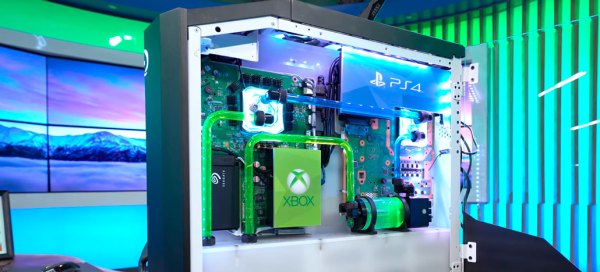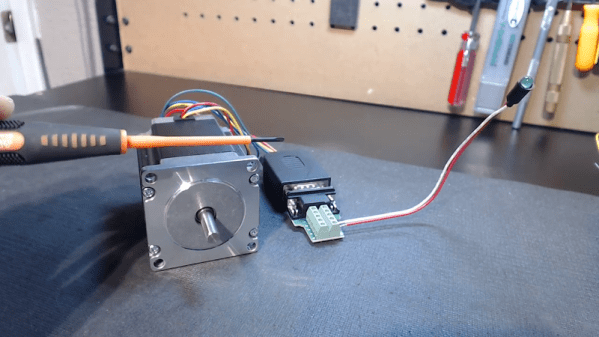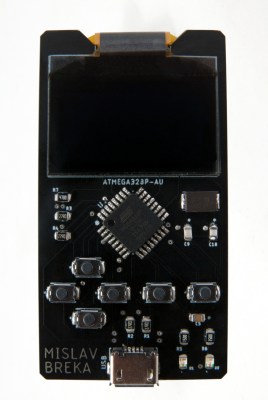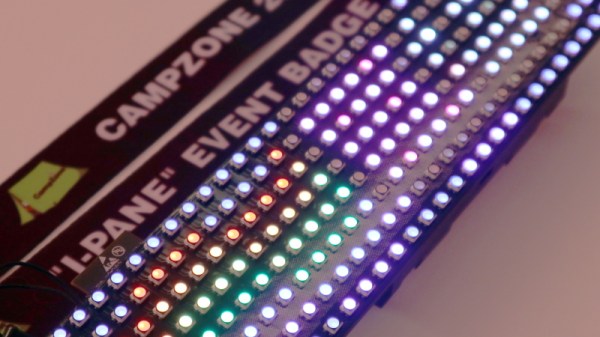When folk at Origin PCs realized that their company was about to celebrate its 10th anniversary of making custom (gaming) PCs, they knew that they had to do something special. Since one thing they did when the company launched in 2009 was to integrate an XBox 360 into a gaming PC, they figured that they might as well refresh and one-up that project. Thus 2019’s Project ‘Big O’ was born.
Naturally still featuring a high-end gaming PC at its core, the show piece of the system is that they also added an XBox One X, Playstation 4 Pro and Nintendo Switch console into the same full-tower GENESIS chassis. For this they had to strip the first two consoles out of their enclosures and insert them into the case each along with their own (appropriately colored) watercooling loop. Unfortunately the optical drives got ditched, presumably because this made things look cleaner.
The Switch was not modded or even cracked open. Instead a Switch dock was installed in the front of the case, allowing one to dock the Switch in the front of the case, and still use it in a mobile fashion after undocking it. Meanwhile an Ethernet and HDMI switch simplify the interfaces to this gaming system a lot, requiring one to only plug in a single HDMI and Ethernet cable to plug in all capable platforms. The result is a pretty sleek-looking system, definitely an eye-catcher.
Since Origin will never, ever, sell the Big O to customers as it’s just a promotional item, it does tickle the imagination. Case-modding and combining multiple computers (often an ATX and mini-ITX) system into a single case is nothing new, but aspects such as having a dockable Switch feature, this clean aesthetic and overall functionality makes one wonder what an enterprising hobbyist could accomplish here.
Continue reading “PC And Console Gaming United Courtesy Of Origin”























